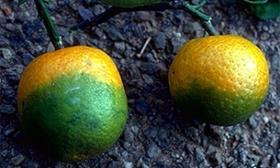
The California Department of Food and Agriculture (CDFA) and the US Department of Agriculture (USDA) has confirmed the detention of Huanglongbing (HLB), or citrus greening disease, in a tree in Riverside County.
The sample was taken from a grapefruit tree in a residential neighbourhood of Riverside on 10 July, with the CDFA undertaking a survey and treatment programme in the area, including removing the infected tree.
HLB is spread through the Asian citrus psyllid as it moves from tree to tree, infecting citrus plants with the HLB bacteria.
“The discovery of this disease means all citrus trees are at risk — including homegrown trees enjoyed by residents and thousands of acres of trees cared-for by citrus farmers,” said Ruben Arroyo, Riverside County Agricultural Commissioner/Sealer. “It’s important for residents, growers and agricultural officials to work together to quickly find this disease and stop its spread.”
The disease has been detected in more than 70 citrus trees across Los Angeles and Orange County since 2012, though this is the first time it’s reached the Southern California county of Riverside.
CDFA is continuing its citrus pest and disease prevention programme in the state, working alongside the industry, researchers and the general public to prevent the spread of HLB.
“It has never been more important to protect California’s citrus farmers, which represent a US$3bn economic driver for our state and 20,000 jobs,” said CDFA secretary Karen Ross. “The feedback CDFA received from the industry was overwhelmingly supportive of this program.”
The disease has already decimated Florida’s citrus industry, with the crop dropping from a record 244m boxes in 1997/98 to 67.8m in 2016/17, according to the CDFA.



